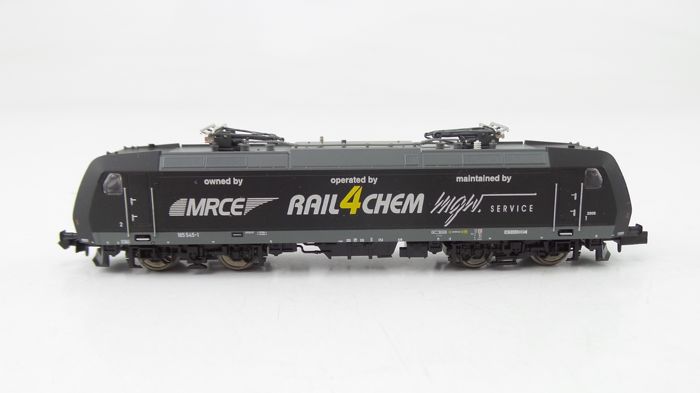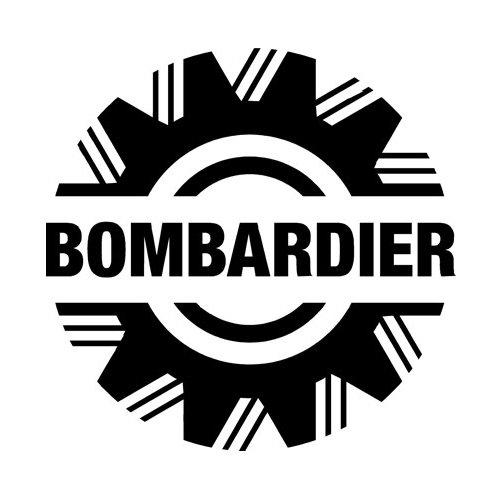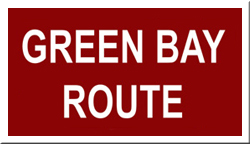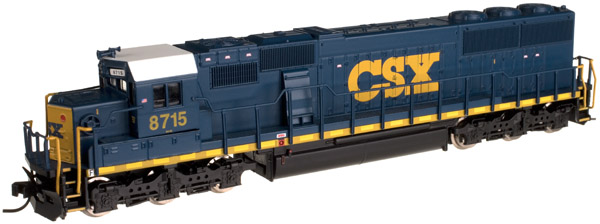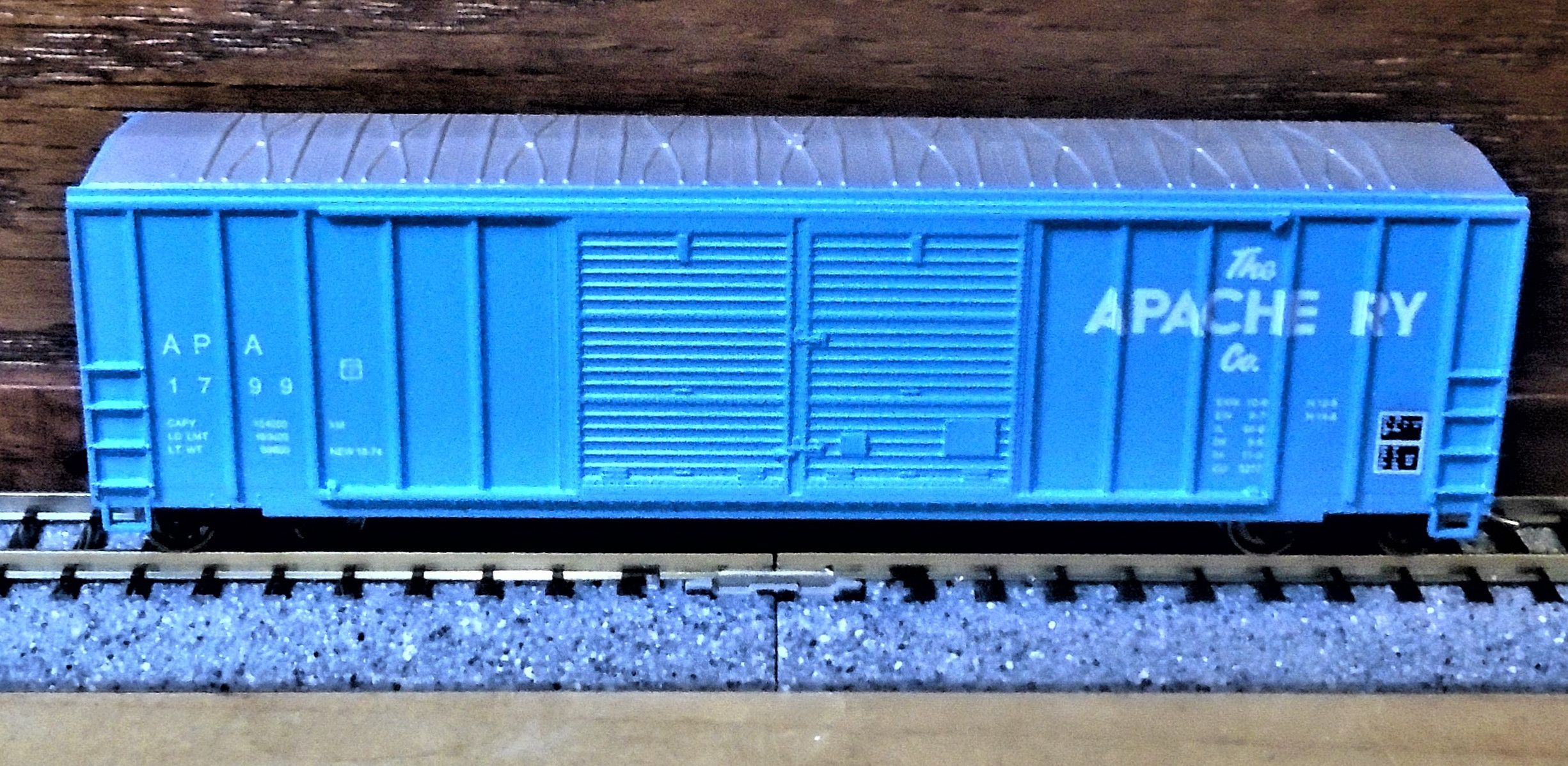Minitrix - 11123-A - Locomotive, Electric, Bombardier TRAXX - RAIL4CHEM - 185 545-1
| Stock Number | 11123-A |
| Brand | Minitrix |
| Manufacturer | Minitrix |
| Body Style | Minitrix Electric Locomotive BR 185 |
| Prototype Vehicle | Locomotive, Electric, Bombardier TRAXX (Details) |
| Road or Company Name | RAIL4CHEM (Details) |
| Road or Reporting Number | 185 545-1 |
| Paint Color(s) | Black |
| Print Color(s) | White |
| Coupler Type | Rapido Hook |
| Coupler Mount | Body-Mount |
| Wheel Type | Chemically Blackened Metal |
| Wheel Profile | Small Flange (Low Profile) |
| Multipack ID Number | 11123 |
| DCC Readiness | Ready |
| Release Date | 2008-01-01 |
| Item Category | Locomotives |
| Model Type | Electric |
| Model Subtype | BR |
| Model Variety | 185 |
| Prototype Region | Europe |
| Prototype Era | EU Epoch VI (2001 - Present) |
| Years Produced | 1996-2018 |
| Scale | 1/160 |
Specific Item Information:
Only available as part of starter set 11123.
DCC Information:
Earlier models accept NEM 651 decoders. Later models accept MTC-14 decoder.
Prototype History:
Bombardier TRAXX is a modular product platform of electric and Diesel-electric mainline locomotives built by Bombardier Transportation, built in both freight and passenger variants. The first version was a dual voltage AC locomotive built from 2000 for German railways; later versions include DC versions, as well as quadruple voltage machines, able to operate on most European electrification schemes: 1.5/3.0 kV DC and 15/25 kV AC. The family was expanded to include diesel powered versions in 2006. Elements common to all variants include the steel bodyshells, the two bogies with two powered axles each, the three-phase asynchronous induction motors, the cooling exhausts on the roof edges, and the wheel disc brakes.
The TRAXX brand name itself was introduced in 2003. The acronym stands for Transnational Railway Applications with eXtreme fleXibility. Locomotives were primarily made for the railways of Germany, with orders coming from other countries including France, Israel, Switzerland, Sweden, Norway, Italy, Belgium, Luxembourg, Poland, Spain, Hungary, South Africa and the Netherlands. In Sweden, these are known as the Re 14 class.
The TRAXX brand name itself was introduced in 2003. The acronym stands for Transnational Railway Applications with eXtreme fleXibility. Locomotives were primarily made for the railways of Germany, with orders coming from other countries including France, Israel, Switzerland, Sweden, Norway, Italy, Belgium, Luxembourg, Poland, Spain, Hungary, South Africa and the Netherlands. In Sweden, these are known as the Re 14 class.
Road Name History:
RAIL4CHEM was a German rail freight transport company, and the parent company of a number of European subsidiary rail freight transport companies including rail4chem Benelux B.V. (Rotterdam), the rail4chem transalpin AG (Basel) and Fer Polska S.A. (Warsaw).
The business was acquired by Veolia Cargo in 2008, which was acquired by SNCF in 2009. In 2010 the company was grouped under SNCF's new freight train brand Captrain, and absorbed into the Captrain Deutschland subdivision, and became a provider to the division of long distance freight trains.
Read more on Wikipedia.
The business was acquired by Veolia Cargo in 2008, which was acquired by SNCF in 2009. In 2010 the company was grouped under SNCF's new freight train brand Captrain, and absorbed into the Captrain Deutschland subdivision, and became a provider to the division of long distance freight trains.
Read more on Wikipedia.
Brand/Importer Information:
Trix is a German company that originally made Trix metal construction sets. one of its co-founders was Stephan Bing, the son of the pioneer toy-maker industrialist Ignaz Bing. In 1935 the company began producing the electrically powered model trains that it became famous for, under the Trix Express label. Prior to the outbreak of World War II the Trix company produced a small range of fairly unrealistic AC powered three rail models running at 14 volts.
N gauge models under the Minitrix brand were made from the late 1960s mostly of European prototypes (German and British primarily). North American prototypes were also manufactured and marketed under the Aurora "Postage Stamp" brand; later these items were sold under the American Tortoise, Model Power and Con-Cor brands. Trix sometimes utilized North American consultants to aid in the design of this portion of the product line. The "Hornby Minitrix' brand was used in the 1980s for a short lived range of British outline models using the earlier product tooling.
Trix's owner in the 1980s and 1990s was Mangold, which went bankrupt in the late 1990s and Märklin purchased the assets in January 1997. In part, this purchase was a reflection of Märklin's need for added production capacity; Trix had been manufacturing certain items for Märklin in previous years. The purchase was also in response to the earlier purchase of the Karl Arnold company by the Italian company Rivarossi; Märklin were very keen to take over Trix market share in 2-rail H0 and especially Minitrix, until then Märklin had not marketed N gauge models. In 2003, Märklin introduced its first N gauge models under the well established Minitrix brand. A number Märklin H0 scale three-rail AC locomotives have also been introduced in two-rail DC versions under the Trix logo and many models are shared between the two brands.
From Wikipedia
N gauge models under the Minitrix brand were made from the late 1960s mostly of European prototypes (German and British primarily). North American prototypes were also manufactured and marketed under the Aurora "Postage Stamp" brand; later these items were sold under the American Tortoise, Model Power and Con-Cor brands. Trix sometimes utilized North American consultants to aid in the design of this portion of the product line. The "Hornby Minitrix' brand was used in the 1980s for a short lived range of British outline models using the earlier product tooling.
Trix's owner in the 1980s and 1990s was Mangold, which went bankrupt in the late 1990s and Märklin purchased the assets in January 1997. In part, this purchase was a reflection of Märklin's need for added production capacity; Trix had been manufacturing certain items for Märklin in previous years. The purchase was also in response to the earlier purchase of the Karl Arnold company by the Italian company Rivarossi; Märklin were very keen to take over Trix market share in 2-rail H0 and especially Minitrix, until then Märklin had not marketed N gauge models. In 2003, Märklin introduced its first N gauge models under the well established Minitrix brand. A number Märklin H0 scale three-rail AC locomotives have also been introduced in two-rail DC versions under the Trix logo and many models are shared between the two brands.
From Wikipedia
Item created by: gdm
on 2018-04-14 07:35:06
Last edited by: CNW400 on 2020-08-20 10:56:01
If you see errors or missing data in this entry, please feel free to log in and edit it. Anyone with a Gmail account can log in instantly.
Last edited by: CNW400 on 2020-08-20 10:56:01
If you see errors or missing data in this entry, please feel free to log in and edit it. Anyone with a Gmail account can log in instantly.


